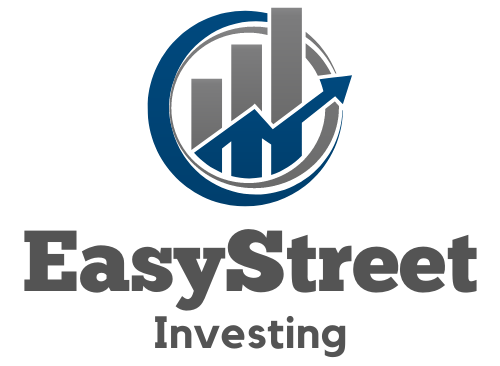Diving into the world of real estate investment, the fix and flip strategy emerges as a compelling avenue for savvy investors aiming to turn a profit. At its core, this approach involves purchasing properties with untapped potential, revamping them, and selling them at a higher price point. As you navigate through our insights, brace yourself to uncover the intricacies of market analysis, renovation planning, and strategic selling that could potentially swell your bank balance.
Curious about transforming dilapidated houses into someone’s dream home while padding your wallet? You’re in for an enlightening journey. We’ll walk you through how to identify undervalued gems, estimate refurbishment costs accurately, and execute a sale that leaves buyers clamoring and competitors wondering. Get ready to roll up your sleeves; we’re about to reveal tips and tricks that can help you play the real estate game like a pro—no magic wand needed, just smart decisions and hard work.
Important Highlights
1. The fix and flip strategy in real estate involves purchasing undervalued properties, improving them through renovations, and selling them at a higher price for profit. Investors must possess a keen eye for spotting potential in overlooked properties and the ability to execute renovations efficiently to ensure a quick turnaround and reduce holding costs.
2. Accurate budgeting is paramount in fix and flip projects; it encompasses not only the purchase price and renovation costs but also factors in additional expenses such as taxes, utilities, insurance, and real estate agent fees. Underestimating these costs can significantly diminish profits or even result in financial loss.
3. Successful flippers often have a strong network of professionals, including contractors, real estate agents, and lenders. Building relationships with skilled contractors ensures that renovation work is of high quality and completed on time, while working with knowledgeable real estate agents can assist in quickly finding suitable properties and selling renovated homes swiftly.
4. Knowledge about financing options is crucial since fix and flippers typically require access to capital to cover the upfront costs of property acquisition and renovations. Options such as hard money loans, home equity lines of credit (HELOCs), or private money loans are commonly used due to their short approval times, which is essential for capitalizing on potential deals.
5. A deep understanding of the local real estate market trends helps investors make informed decisions about which properties to invest in and what types of renovations will lead to the best return on investment (ROI). Keeping an eye on neighborhood growth patterns, employment rates, local amenities, and school district ratings can influence both the buying price of the fixer-upper and its post-renovation value.
Understanding the Fix and Flip Strategy
In essence, fix and flip involves purchasing properties, making improvements, and selling them for a profit. Investors often target homes that are undervalued due to their condition or other factors. A successful flip hinges on thorough market analysis, accurate budgeting for renovations, and timely execution of the work.
Finding the Right Property
Identifying a viable property is critical in the fix and flip process. This requires recognizing potential in homes that may initially seem undesirable. Investors use tools like MLS listings, foreclosure databases, and real estate auctions to find opportunities. They evaluate factors such as location, property condition, and after-repair value (ARV) to make informed decisions.
Financing Your Investment
Securing financing for a fix and flip project can be done through various methods such as traditional bank loans, hard money lenders, or private investors. Each option has its own pros and cons in terms of interest rates, loan terms, and speed of funding. An investor’s creditworthiness and experience can significantly influence financing options.
Executing the Renovation Plan
Once the property is acquired, swift and efficient renovation is paramount. Creating a detailed plan with a realistic timeline helps to manage contractors and control costs. High-impact areas like kitchens and bathrooms often receive priority for upgrades since they can greatly increase home value.
Navigating Market Dynamics
The success of a fix and flip largely depends on understanding real estate market trends. Knowledge about local demand, pricing strategies, and seasonal fluctuations enables investors to optimize their sale timing. Resources like Zillow Research provide valuable insights into market dynamics.
Selling for Maximum Profit
The ultimate goal of flipping is to sell at a profit that justifies the investment of time and money. Effective marketing strategies, such as staging the home or leveraging online platforms, can attract more buyers and potentially lead to better offers. Skilled negotiation when closing the deal is also crucial.
Risk Mitigation Techniques
Awareness of risks involved with property flipping is essential. Unforeseen structural issues or market downturns can impact profitability. Diversifying investments or having contingency funds are among strategies seasoned flippers use to buffer against potential losses.
Tax Implications of Flipping Homes
An understanding of tax obligations associated with flipping houses can prevent costly surprises at year’s end. Profits from flips are typically taxed as ordinary income but consulting with a tax professional who specializes in real estate can provide guidance on deductions or tax planning strategies.
What Should You Remember When Executing a Fix and Flip?
- Evaluate properties rigorously to ensure they offer good potential for profit after renovations.
- Create comprehensive budgets that include all costs associated with rehabbing the property.
- Assess multiple financing routes to secure the best possible loan terms for your situation.
- Prioritize renovations that add the most value while controlling costs by managing timelines effectively.
- Maintain flexibility in your strategy to adapt to any changes in market conditions.
- Implement effective marketing tactics to showcase your renovated property attractively.
- Understand all risks involved in the process and develop strategies to mitigate them as much as possible.
- Stay informed about tax regulations affecting house flipping profits to manage your financial obligations efficiently.
How Can the Fix and Flip Strategy Be Applied During Economic Downturns for Profit?
During economic downturns, savvy investors can leverage real estate downturn investment strategies to capitalize on lower property prices. By identifying undervalued homes, making strategic renovations, and targeting key buyer demographics, investors can successfully flip properties for a profit, even in uncertain economic times. Flexibility and market knowledge are essential for success.
Frequently Asked Questions
What is the Fix and Flip Strategy?
The Fix and Flip strategy involves purchasing properties, often in need of repair, at a lower price, improving them through renovations, and then selling them for a profit. It’s about spotting potential, making smart upgrades, and flipping the house quickly.
How much money can I make from flipping a house?
Your earnings can vary widely based on factors like location, property condition, market trends, and how well you manage renovation costs. Some flips yield substantial profits, while others might break even or incur losses if not managed carefully.
What are the risks involved in flipping real estate?
Risks include unexpected renovation costs, prolonged timeframes causing increased holding costs, market downturns reducing property value, or overestimating the final sale price. Thorough market research and careful planning can mitigate these risks.
Do I need a lot of money to start fix and flipping?
Fixing and flipping typically requires substantial capital for property purchase and renovations. However, there are financing options available such as loans or partnering with investors that can reduce the initial capital requirement.
How do I find properties to flip?
You can find potential flip properties through various channels like real estate agents, auctions, bank foreclosures, or online real estate platforms. Look for underpriced homes in neighborhoods with rising property values.
What kind of renovations should I focus on?
Focus on renovations that increase property value without going overboard. This often includes updates to kitchens and bathrooms, painting, flooring improvements, and curb appeal enhancements. Keep the buyer’s preferences in mind.
Is it better to do the work myself or hire contractors?
If you have the skills and time, doing some work yourself can save money. However, hiring professionals ensures quality workmanship and can speed up the process. Balance cost savings with efficiency and expertise when deciding.
How do I price my flipped property?
Pricing should be based on comparable sales in the area (comps), taking into account the quality of your renovations. Set a competitive price that will also allow you to realize your desired profit margin.
What’s the best way to sell a flipped house?
Selling strategies include listing with a real estate agent for broad exposure or selling directly to buyers if you have marketing skills. Staging the home effectively and professional-quality listing photos also help attract buyers.
How long does it usually take to flip a house?
The timeline varies but is typically between a few months to a year from purchase to sale. Efficient project management is crucial for minimizing holding costs and maximizing profits.
Closing Thoughts on Fix & Flipping
The Fix and Flip strategy remains an attractive way to generate profits in real estate if done wisely. Success hinges on thorough market research, precise budgeting for renovations, understanding buyer demand, and efficient project execution. While this venture carries inherent risks—like any investment—education, experience gained from each flip, and adaptability will enhance your chances of turning handsome profits consistently over time.
Bearing in mind that every fix-and-flip project is unique with its own set of challenges and opportunities allows for growth as an investor. By staying informed about market conditions and focusing on adding genuine value to each property flipped, you position yourself favorably within the dynamic world of real estate investing. Remember: plan meticulously but be prepared to pivot as needed—the flexibility could very well be your key to flipping success.

